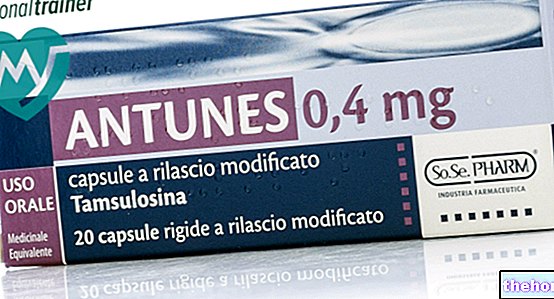Active ingredients: Lactulose
NORMASE 66.7% syrup 200 m bottle
Indications Why is Normase used? What is it for?
Pharmacotherapeutic group
Acidifying laxative of intestinal contents with osmotic action.
Therapeutic indications
Short-term treatment of occasional constipation.
Contraindications When Normase should not be used
Hypersensitivity to the active substance or to any of the excipients. Galactosemia.
Laxatives are contraindicated in subjects with acute abdominal pain or of unknown origin, nausea or vomiting, intestinal obstruction or stenosis, rectal bleeding of unknown origin, severe dehydration.
Generally contraindicated during pregnancy and lactation (see "Pregnancy and lactation" section).
Generally contraindicated in pediatric age (see section "Appropriate precautions for use").
Precautions for use What you need to know before you take Normase
The active ingredient of NORMASE is a poorly absorbable and non-metabolized sugar. Due to the presence of other sugars, such as lactose, galactose and tagatose, diabetic patients must inform their doctor.
Patients on digitalis therapy should consult their physician before starting therapy.
In children under the age of 12, the medicine can only be used after consulting your doctor.
The treatment of chronic or recurrent constipation always requires the intervention of the physician for the diagnosis, the prescription of the drugs and the surveillance during the therapy.
Consult your doctor when the need for the laxative derives from a sudden change in previous bowel habits (frequency and characteristics of bowel movements) lasting more than two weeks or when the use of the laxative fails to produce effects.
It is also advisable for elderly people or those in poor health to consult their doctor before using the medicine.
Interactions Which drugs or foods can modify the effect of Normase
Broad spectrum bactericidal agents and antacids, administered orally at the same time as lactulose, can reduce its therapeutic efficacy. On the other hand, a synergistic effect with neomycin is possible.
Laxatives can reduce the time spent in the intestine, and therefore the absorption, of other drugs administered simultaneously orally.
Therefore, avoid ingesting laxatives and other drugs at the same time: after taking a medicine, leave an interval of at least two hours before taking the laxative.
Warnings It is important to know that:
The abuse of laxatives (frequent or prolonged use or with excessive doses) can cause persistent diarrhea with consequent loss of water, mineral salts (especially potassium) and other essential nutritional factors.
In severe cases, the onset of dehydration or hypokalaemia (decrease in potassium in the blood) is possible, which can cause cardiac or neuromuscular dysfunctions, especially in the case of simultaneous treatment with cardiac glycosides, diuretics or corticosteroids.
The abuse of laxatives, especially contact laxatives (stimulant laxatives), can cause addiction (and, therefore, the possible need to gradually increase the dosage), chronic constipation and loss of normal intestinal functions (intestinal atony).
Health education notes: first of all it must be borne in mind that, in most cases, a balanced diet rich in water and fiber (bran, vegetables and fruit) can permanently solve the problem of constipation.
Many people think they suffer from constipation if they fail to evacuate every day. This is a mistaken belief because this situation is completely normal for a large number of individuals.
Consider, instead, that constipation occurs when the bowel movements are reduced compared to one's personal habits and are associated with the emission of hard stools.
If episodes of constipation occur repeatedly, a doctor should be consulted.
Pregnancy and breastfeeding
There are no adequate and well-controlled studies on the use of the drug in pregnancy or lactation.
Therefore, the medicine should only be used in case of need, under the direct supervision of the doctor, after evaluating the expected benefit to the mother in relation to the possible risk to the fetus or infant.
Effects on ability to drive and use machines
The product has no influence on the ability to drive and use machines.
The medicine is not contraindicated for people with celiac disease.
KEEP OUT OF REACH OF CHILDREN.
Dose, Method and Time of Administration How to use Normase: Posology
The correct dose is the minimum sufficient to produce easy evacuation of soft stools.
It is advisable to initially use the minimum doses provided. When necessary, the dose can then be increased, but without ever exceeding the maximum indicated.
Adults: The starting dose is usually 20ml per day followed by 10ml per day as a maintenance dose. In some subjects, a higher starting dose (30-40 ml) may be required which must then be progressively reduced to the normal maintenance dose. In sensitive subjects it is advisable to start with lower doses instead.
Children: 5 to 15 ml per day, depending on body weight.
Infants: half - 1 ml per day for each kg of body weight.
The quantities indicated above can also be taken in a single daily dose, preferably in the morning on an empty stomach or in the evening before a meal.
Laxatives should be used as infrequently as possible and for no more than seven days. The use for longer periods of time requires a doctor's prescription after adequate evaluation of the individual case.
Swallow with an adequate amount of water (a large glass). A diet rich in liquids promotes the effect of the medicine.
Overdose What to do if you have taken too much Normase
Excessive doses can cause abdominal pain and diarrhea; consequent losses of fluids and electrolytes must be replaced.
Treatment: discontinuation of the drug.
See also what is reported in the paragraph "Special warnings" and "Appropriate precautions for use", about the abuse of laxatives.
Side Effects What are the side effects of Normase
Occasionally: isolated cramping pains or abdominal colic, more frequent in cases of severe constipation, flatulence. These symptoms are usually mild and subside spontaneously after the first few days of treatment.
Only in the event of diarrhea is it advisable to reduce the dosage or, if necessary, to suspend the treatment. After prolonged treatment, loss of electrolytes may occur.
Warning: The patient should report any other undesirable effect not described here to the treating physician or pharmacist.
Expiry and Retention
Warning: Do not use the medicine after the expiry date indicated on the package.
Other information
Composition
100 ml of syrup contain: Lactulose g 66.7; excipients (citric acid, Curt Georgi aroma n.7 bis, purified water) q.s.
15 ml of syrup contains 10 g of lactulose.
Presentation
200 ml amber plastic bottle. The bottle is equipped with a graduated measuring cup at 2.5 - 5 - 7.5 - 10 - 15 - 20 - 25 - 30 ml.
Source Package Leaflet: AIFA (Italian Medicines Agency). Content published in January 2016. The information present may not be up-to-date.
To have access to the most up-to-date version, it is advisable to access the AIFA (Italian Medicines Agency) website. Disclaimer and useful information.
01.0 NAME OF THE MEDICINAL PRODUCT
NORMASE EPS 66.7% syrup
02.0 QUALITATIVE AND QUANTITATIVE COMPOSITION
100 ml of syrup contain
Lactulose 66.7 g
Excipients (citric acid, sodium benzoate, cream flavor, purified water) to taste
15 ml of syrup contains 10 g of lactulose.
03.0 PHARMACEUTICAL FORM
Syrup for oral use
04.0 CLINICAL INFORMATION
04.1 Therapeutic indications
Portosystemic encephalopathy, liver cirrhosis.
04.2 Posology and method of administration
From 90 to 190 ml of syrup per day in 2 or 3 doses.
04.3 Contraindications
Hypersensitivity to one of the components of the product. Galactosemia.
04.4 Special warnings and appropriate precautions for use
As the active ingredient of NORMASE EPS is a non-absorbable sugar, it is not contraindicated at the recommended doses in diabetic patients. In patients presenting with disorders caused by excessive intestinal meteorism, it is advisable to start treatment with the minimum doses indicated; these doses can be gradually increased in relation to the patient's response.
Warnings
In practice, NORMASE EPS does not contain absorbable sugars in the gastrointestinal tract, so its administration is compatible with clinical situations that involve alterations in carbohydrate metabolism.
Do not use the drug if abdominal pain, nausea and vomiting are present. Keep out of reach of children.
Do not dispose of the bottle in the environment after use.
04.5 Interactions with other medicinal products and other forms of interaction
Broad spectrum antibiotics, administered orally at the same time as lactulose, can reduce its degradation, limiting the acidifying effect on the intestinal contents and, consequently, the therapeutic efficacy. On the other hand, a synergistic effect with neomycin is possible.
The drug can lead to "increased toxicity of digitalis due to potassium depletion.
04.6 Pregnancy and breastfeeding
No contraindications.
04.7 Effects on ability to drive and use machines
Nobody.
04.8 Undesirable effects
The administration of high doses can sometimes cause intestinal cramps, diarrhea, bloating and flatulence.
After prolonged treatment, loss of electrolytes may occur.
04.9 Overdose
Overdosing can cause osmotic diarrhea, in which case the drug should be suspended and symptomatic treatment instituted.
05.0 PHARMACOLOGICAL PROPERTIES
05.1 Pharmacodynamic properties
NORMASE EPS is a high-purity lactulose-based specialty.
Lactulose (ß-galactosido-fructose) is a synthetic disaccharide which, not hydrolyzed in the small intestine due to the lack of a specific enzyme, reaches the colon unchanged, where it is degraded by saccharolytic bacteria (Lactobacillus acidophilus, Lactobacillus bifidus) of which it favors the development, especially to the detriment of the proteolytic flora.
In this way, low molecular weight organic acids, especially lactic acid, are formed, with a consequent reduction of the pH in the colonic environment.
Lactulose causes a decrease in the production of toxic substances processed by the proteolytic flora, including ammonia, whose role in hepatic coma is well known. It decreases the intestinal absorption of ammonia, due to the formation of the NH4 ion, and increases the recall of ammonia from the blood into the intestinal lumen. There is also a decrease in toxins, which in severe hepatic insufficiency the liver is no longer able to metabolize and which, by crossing the blood-brain barrier, disturb cerebral metabolism.
05.2 Pharmacokinetic properties
Lactulose is practically not absorbed and reaches the colon unchanged, where it is the substrate of the normal saccharolytic flora.
05.3 Preclinical safety data
Toxicological tests have shown that lactulose is practically free of toxicity when administered orally.
Acute toxicity LD50 in rat: oral 40 ml / kg, endoperitoneal 16 ml / kg;
Acute toxicity LD50 in mice: oral 40 ml / kg, endoperitoneal 19 ml / kg.
Chronic toxicity: in rats the daily oral administration of 2-4-8 ml / kg of lactulose for 24 weeks did not cause significant alterations compared to controls; in dogs, during and after daily oral administration of 3 ml / kg of lactulose for 16 weeks, body growth and general and behavioral state were completely normal.
06.0 PHARMACEUTICAL INFORMATION
06.1 Excipients
-----
06.2 Incompatibility
None.
06.3 Period of validity
3 years in intact packaging.
06.4 Special precautions for storage
None.
06.5 Nature of the immediate packaging and contents of the package
Yellow glass bottle, closed with UT24 aluminum cap and polyethylene gasket, packed in a cardboard box and equipped with a graduated polypropylene measuring cup.
06.6 Instructions for use and handling
-----
07.0 MARKETING AUTHORIZATION HOLDER
L. Molteni & C. dei F.lli Alitti Company of Exercise S.p.A., Frazione Granatieri, Scandicci (Florence).
Distributor: MERCK PHARMA S.p.A.
via Ilio Barontini 8, 50018 Scandicci (Florence)
08.0 MARKETING AUTHORIZATION NUMBER
66.7% syrup 1 bottle of 200 ml: AIC n. 023535166
66.7% syrup 1 bottle of 400 ml: AIC n. 023535180
09.0 DATE OF FIRST AUTHORIZATION OR RENEWAL OF THE AUTHORIZATION
Date of first marketing: May 1995
10.0 DATE OF REVISION OF THE TEXT
-----




























